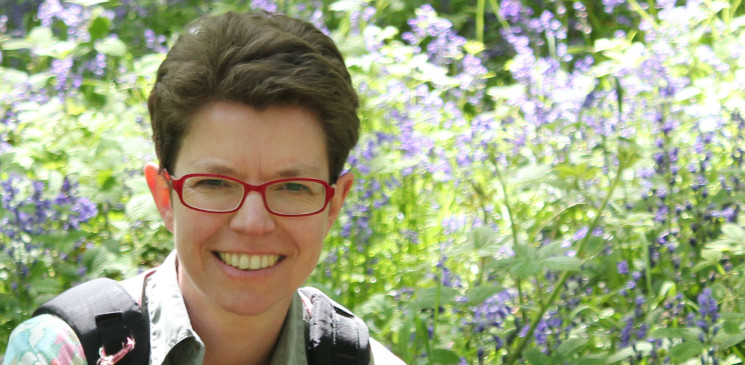
By Dr Alexa Ruppertsberg, Head of Public Engagement with Research, University of Leeds
Recently I was invited to be a panellist on ‘The communication and image of science – STEM attraction and business engagement’ session at the Business of Science 2018 conference in Liverpool.
Each of the panel members made their pitch about the communication of science and how it related to their field of work. There were Julian Cobley, Managing Director, Cheshire Skills and Growth Company; Anna Hayes, Managing Director, Active Profile PR; Griselda Tobogo, Managing Director, Forward Ladies; and Colin McLaughlin, Technology Transfer Manager, Lancaster University.
I started with a bit about myself: how I am a scientist, not necessarily doing science in my current job, but that I am a scientist in my approach, in my thinking about most aspects of life. I am curious, I ask why and I am creative. The fMRI scan of my head that I brought along was testament to that. Not only was it one of the early fMRI scans for research into healthy brain function – in this case about object recognition – it exemplified that I had found a way to see inside my own head and find all the parts that I had previously learned about in my biology degree. I, like many of my colleagues, can point to a certain moment when I knew what I wanted to study. Often these moments are due to events, books or people. In my case it was a book given to me by my godmother about DNA and how a cell produces proteins. Partly my work today is to help create these pivotal moments for young people. Our public engagement team at the University of Leeds aims to make sure that academics have the confidence, support and opportunities to take academic research out of the ivory tower.
We follow the engaged research cycle where our academics engage with non-academic audiences (be that the public, stakeholders, businesses, organisations, patients etc.) at the time when shaping their research questions, doing the actual research or when they share their findings. Of course, we won’t hold them back if they engage at all stages! To help us navigate the world of public engagement we use the STAR compass with the drivers for public engagement:
Social responsibility – acting socially responsible and promote social mobility
Trust – continuing building trust in the research that we do
Accountability – providing transparency about what we do with the money that we as a public institution receive
Research relevance – making research relevant in people’s lives including inspiring the next generation of researchers.
At Leeds we support staff through advice, signposting, being thinking partners and planners for pathways to impact sections; we run a Public Engagement practitioner network which is open to all staff; we have Engagement Champions across schools, our Deputy VC, Professor Lisa Roberts is our senior champion for Public Engagement; we offer a mentoring and coaching scheme for Engagement Fellows, we have Public Engagement awards (our awardees have won national awards); and we run our research open day ‘Be Curious’, where we bring our research to live in a hands-on way. Lastly, Public Engagement and outreach are part of academic promotion criteria, something we are very proud of.
These activities are helping us to deliver our vision that at Leeds all research projects include an appropriate engagement activity, which will maximise impact of the research. To conclude I gave an example of how science/research is all around us, even in the most mundane. I talked about a tin of peas. The whole process of harvesting, processing and packing is accomplished in 150 minutes. Crop readiness is monitored, GPS data is used to guide the combine harvesters, lorries then take the peas to the factory where laser technology scans the thousands of peas and shoots out individual peas that do not conform to quality standards before they are finally tinned. People have conducted basic science research, others developed the technology and somebody scaled it up and built it all. All that STEM you’ll get for 30 pence – which is amazing!
Judging by the reaction of the audience my pitch hit home, at least that’s how I interpreted the cheer. What did I learn? I was intrigued to learn that businesses are very much interested in engaging with young people (to fill the STEM shortage) and do so. And we, universities, do that too. To further the impact we need to talk to each other and see what each of us could bring to this with our different backgrounds to achieve something bigger and more profound.